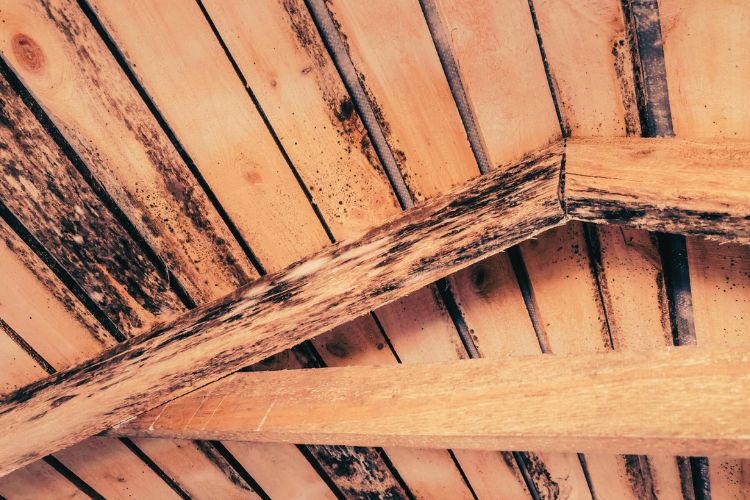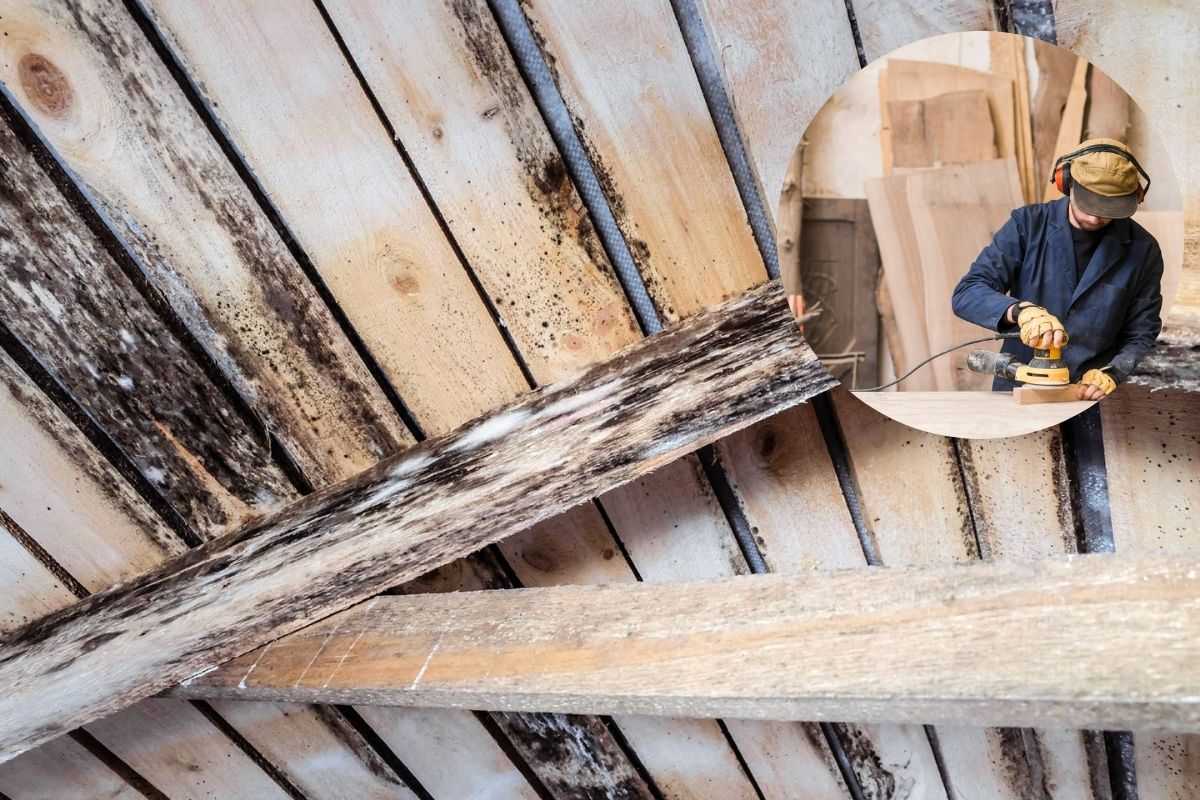Mold is a serious concern for homeowners in humid areas like Arlington, Texas. Having faced this issue personally, I’ve gathered a wealth of knowledge on effective mold remediation methods that don’t require dismantling the structure of your home.
This guide covers tips, techniques, and preventive measures to keep mold at bay.
My Personal Battle with Mold: Lessons Learned
I remember my first personal brush with mold vividly. It was during the rainy season, and the humidity in Arlington had hit record highs. My family and I noticed a musty smell emanating from our basement.

Upon investigation,
I discovered a significant mold infestation on the wooden beams supporting our home. Sight was enough to make my heart sink. This wasn’t just a patch here and there, it was a full-blown invasion.
How to Remove Mold Without Removing All Wood?
Mold in your home is never a welcome sight, especially on wooden surfaces where it can quickly cause damage. However, removing mold from wood doesn’t always mean you need to replace the wood itself.

In fact, if the infestation is manageable, you can remove mold without resorting to costly and disruptive wood replacement. This guide will help you understand how to remove mold from wood efficiently while maintaining the structural integrity of your home.
1. Identify and Isolate the Mold
First, pinpoint all affected areas. Mold spores spread quickly through the air, so it’s crucial to isolate the contaminated sections to prevent further spread.
Use plastic sheeting and tape to seal off the area where you’re working, especially if it’s connected to other rooms or sections of the house. Isolation not only prevents spores from spreading but also keeps the rest of your home safe during the mold removal process.
2. Clean the Surface
Next step in any Arlington mold removal job is surface cleaning, which involves removing any loose mold particles before getting into deeper treatment.
- Vacuum with a HEPA Filter: A HEPA vacuum is ideal for capturing small mold particles. Carefully vacuum the surface to remove any loose spores or dust, which prepares the area for further cleaning.
- Scrub with a Mild Detergent: Create a gentle cleaning solution with water and mild detergent. Use a brush to scrub the affected wood, removing the surface mold. Be sure to work carefully, as scrubbing too hard can damage the wood’s surface.
3. Sand the Affected Areas
For stubborn, embedded mold that won’t come off with simple scrubbing, lightly sanding the area is often effective. Sanding can remove mold trapped in the wood’s porous surface, making it look and feel as good as new.
Be cautious, though: always wear a mask and goggles to protect yourself from airborne mold spores.
This method works best for small, localized mold spots and not extensive mold infestations.
4. Apply a Mold-Removing Solution
Several mold-removal products are available on the market, but for wood surfaces, borate-based solutions are often recommended. These products penetrate wood well and help eliminate mold at the root.
When applying a solution, make sure to follow the manufacturer’s instructions closely for safety and effectiveness. Borate-based solutions are effective at killing mold and can also prevent mold from regrowing on the treated surface.
5. Seal the Wood
Once you’ve removed the mold, sealing the wood is a proactive way to prevent future mold issues. Anti-mold paints and sealants create a protective barrier that reduces moisture absorption and makes it harder for mold to take root again.
Use a high-quality anti-mold sealant on the treated wood surfaces, especially in areas with high humidity or poor ventilation.
Arlington Mold Removal Cost: Understanding the Factors
When it comes to mold removal, cost is always a factor.
In Arlington, mold removal costs can vary depending on the severity and extent of the mold infestation. If you’re handling the job yourself with DIY methods, costs will generally be lower, primarily covering cleaning products, protective equipment, and possibly a dehumidifier.
However, if the mold covers a large area or is causing significant structural damage, it may be time to call in an Arlington mold removal expert. Professional mold remediation costs can range from a few hundred to several thousand dollars, depending on the job’s complexity.
Preventing Future Mold Growth
To ensure that your mold problem doesn’t return, it’s essential to tackle the underlying causes of mold, like moisture buildup and poor ventilation. Here are some effective preventive measures:
- Control Indoor Humidity: Keep humidity levels below 60% with a dehumidifier, especially in high-moisture areas like basements and bathrooms.
- Improve Airflow: Ensure proper ventilation in moisture-prone areas, such as bathrooms, kitchens, and basements, to prevent mold from finding the moisture it needs to grow.
- Regular Inspections: After storms or during periods of high humidity, check wood surfaces for any early signs of mold. Catching mold growth early on can help you avoid costly remediation down the line.
Final Thoughts
Removing mold from wood is possible without having to replace the wood, provided the infestation is caught early and treated effectively. This approach can save homeowners significant money and hassle while protecting the home’s structure.
However, in severe cases, or if you’re unsure about handling the mold yourself, consider contacting a local Arlington mold removal professional to evaluate the situation. They can provide a thorough assessment and estimate, ensuring the problem is dealt with safely and effectively.

